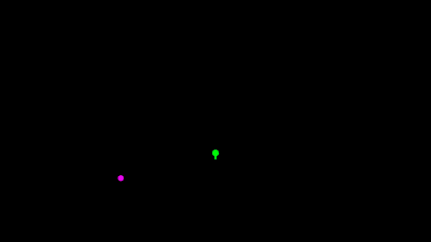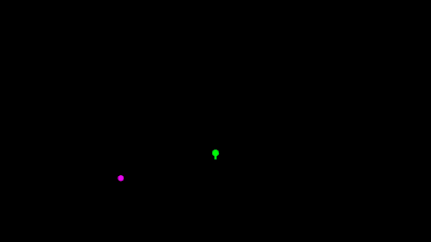Today, astronomers and space enthusiasts around the world are collectively amazed by our erratic presence in the universe, especially as we drift through the cosmos among large asteroids like the one that wiped out the dinosaurs 66 million years ago.
June 30 is Asteroid Day, a holiday celebrated annually to reflect on the prospect of a planet-destroying space rock hitting Earth and what scientists are doing to limit that risk.
The day is celebrated on the anniversary of the 1908 Tunguska event in Russia, when a space rock half the size of a football field broke into the air above a remote forest in Siberia - the largest asteroid impact ever seen on Earth. With a flash brighter than the sun, followed by a thunderous roar, the fireball killed herds of reindeer, knocked people more than 40 miles (64 kilometers) away from the impact off their porches and destroyed some 80 million trees. The impact dumped so much dust into the air that sunsets were bright red for days and people as far away as Asia were able to read newspapers outside until midnight.
More recently, in February 2013, a 20-meter (66-foot) wide space rock slammed into Earth near the Russian city of Chelyabinsk, injuring about 1,500 people and shattering more than 3,000 windows in apartments and commercial buildings. The shock wave generated by the impact was so powerful that it circled our planet twice, scientists say.
Related: Phosphate in NASA's OSIRIS-REx asteroid sample suggests space rock Bennu came from an ocean worldAlthough such destructive space rocks are more likely to end up in oceans than on land, the 2013 asteroid impact just a decade ago "reminded us that these things do happen," Nick Moskovitz of the Lowell Observatory in Arizona told Space .com. "Asteroids have a strange duality to them, because they probably have the... ingredients for life for the Earth, but at the same time, the wrong impact in the right place can cause significant damage to whoever is nearby."
Asteroid Day is a global awareness campaign led by the Asteroid Foundation in Luxembourg. Since December 2016, it has been an official day on the United Nations calendar. In previous years, the day has been celebrated with dozens of local events at institutions around the world, with talks on asteroid science of current interest that year.
Last year, for example many events focused on the hugely successful NASA activities DART missionwhich crashed a refrigerator-sized spacecraft into an asteroid called Dimorphos, knocking the space rock out of orbit by 33 minutes, most likely change the shape of the object also. DART was humanity's first planetary defense test and proved that scientists had the technology needed to defend Earth if a similar space rock were ever on a collision course with our planet. "Last year, Asteroid Day was a lot like the DART celebration," Moskovitz said. "It's a nice day."

This year's celebration, taking place at around 30 institutions worldwide including those in India, Africa, Europe and Mexico, will include talks on Europe's Hera mission, which is a follow-up to DART launching in October and is designed to assess the aftermath of the mission. On Friday and Saturday (28 June and 29 June) in Luxembourg, where the Asteroid Foundation is based, events ranged from seminars on asteroid science and sustainability in space to workshops where visitors could build spaceships with Lego. At night, participants explored the night sky in real time by virtually controlling telescopes in Tuscany, Italy, led by astronomer Gianluca Masi, who manages the Virtual Telescope Project.
Here's one card maps locations of similar ongoing events around the world. If there aren't any nearby, you can follow online discussions about asteroids by astronauts and industry experts who support the foundation recently aired.
Hundreds of people are expected in the US today (June 30) to join scientists on a tour of the Meteor Crater. Asteroid science demonstrations and themed games are planned, and food and drinks will be available.
"Here in northern Arizona we can see the literal impact of asteroids on our planet," said Matt Kent, president and CEO of Meteor Crater and the Barringer Space Museum, in a previous announcement. "What better place to hold an Asteroid Day event than here?"
At 7 p.m. local time, visitors will head to Lowell Observatory, about a half-hour drive away, for telescope viewing and science presentations by astronomers including Moskovitz. Because Asteroid Day falls on a weekend this year, "we were able to see pretty big crowds between the two locations," he said.
At Lowell, research scientist Brian Skiff will discuss the strange quasi-moon of Venus. The space rock, also considered a near-Earth asteroid, was discovered in 2002 and recently given the snappy name Zoozve. It appears to orbit Venus, but is not permanently bound to the planet's gravitational tides, meaning it will eventually be kicked away. It is considered a potentially dangerous space rock, but is not on a collision course with Earth.
Also at Lowell, Moskovitz will present a project that uses off-the-shelf security cameras to take pictures of the night sky in search of meteors, cataloging up to 500 images each night. The project, called LO-CAMS (short for Lowell Observatory Cameras for All-Sky Meteor Surveillance), "is all about cheap hardware put to good use for science," he said. "The night sky can be very active if you have the right instruments to observe it."
The project started eight years ago as a hobby project for Moskovitz and has since grown into a full-fledged operation with dozens of cameras on the roofs of scientific institutes, schools, colleges and sometimes even private homes in Arizona. Based on the HD-resolution photos these cameras take, Moskovitz and the LO-CAMS team can predict the paths of pea-sized meteors and later look for pieces that may have survived their journey to the ground, "as an ultimate treasure hunt," said Moskovitz.
In an intriguing cosmic coincidence, this year's Asteroid Day comes shortly after two asteroids just grazed Earth. Neither was on its way to hit our planet, to make it clear, but the encounter was remarkable nonetheless. The larger of the two, a space rock the size of Mount Everest named 415029 (2011 UL21), flew past our planet on Thursday (June 27), flying on average about 17 times further from Earth than where the moon is located. However, the smaller asteroid, named 2024 MK, shot within the moon's orbit around Earth on Saturday (June 29), close enough to be seen by stargazers using small telescopes in dark locations.
If an asteroid were ever on a collision course with Earth, asteroid-deflecting missions like DART would be crucial to limit the risk of an impact. The mission, universally recognized as a success on many levels, is a testament to our current technology and the team of more than a hundred scientists and engineers who developed it. However, the efficiency of any strategy really depends on the size of the space rock and how much of a head start we get. The only way to limit the risk of a sudden asteroid impact is to find and track as many asteroids as possible, because the asteroids that pose a risk to Earth "are usually objects discovered now with potential impacts over decades or hundreds of years," Moskovitz said.


Related stories:
- The asteroid Apophis, the 'God of Destruction', will arrive on Earth in 2029 - and could encounter a small spaceship
- James Webb Space Telescope Discovers Asteroid Collision in Neighboring Galaxy
- Zoozve, the strange 'moon' of Venus that got its name by accident
Technological advances in recent years have allowed scientists to catalog an increasing number of asteroids in our solar system, including artificial intelligence software that has previously revealed more than 27,000 asteroids. overlooked in telescope imagesAt least a few million more space rocks are expected to be discovered in the near future Vera C. Rubin Observatory which will image the southern sky every night for at least a decade starting next year. At such a pace, the observatory is expected to double the number of known asteroids in the first six months of operation.
According to Moskovitz, scientists may be able to reduce or even largely eliminate the risk associated with major asteroid impacts in the coming decades.
"That's a luxury the dinosaurs didn't have, and it's something we as a species will always benefit from."
